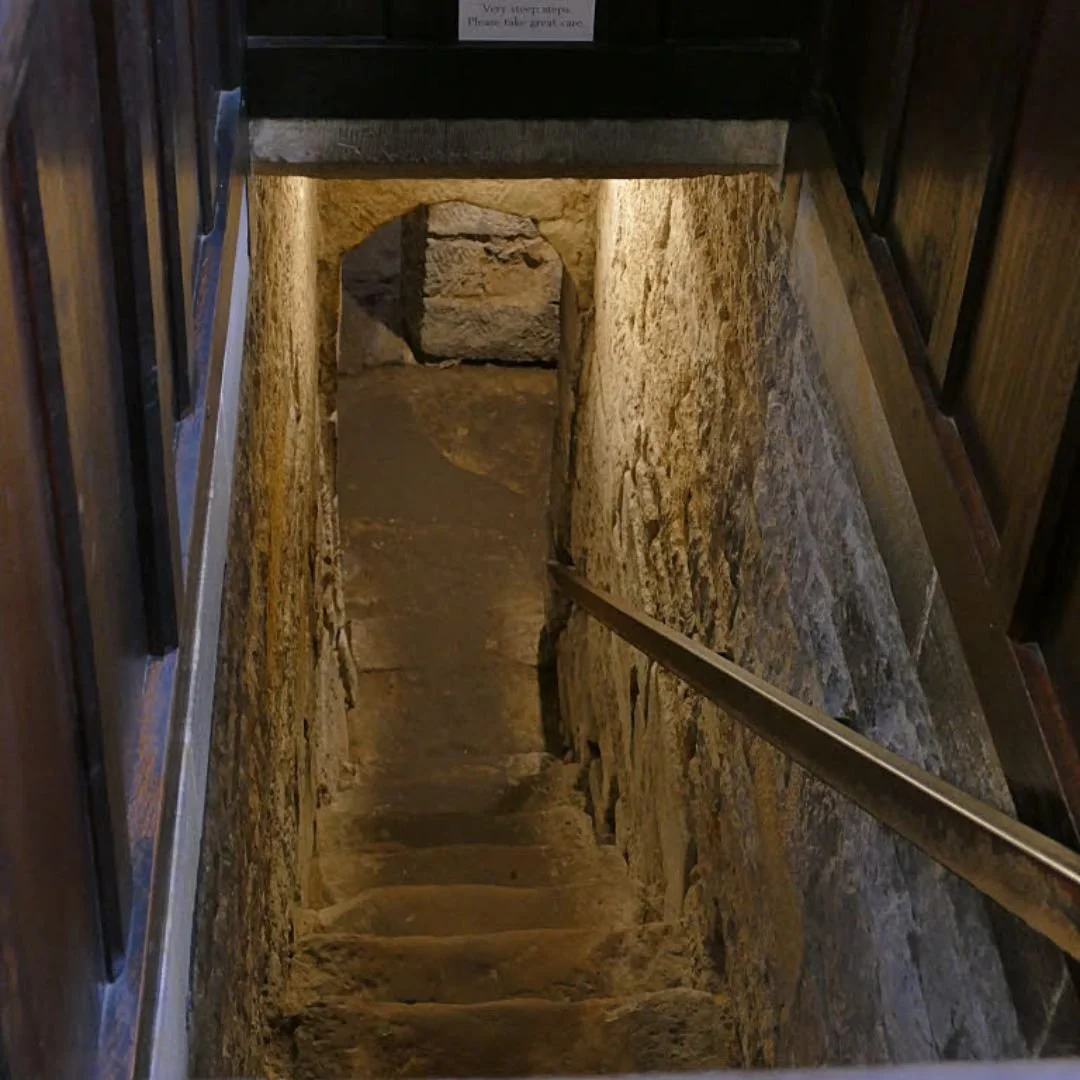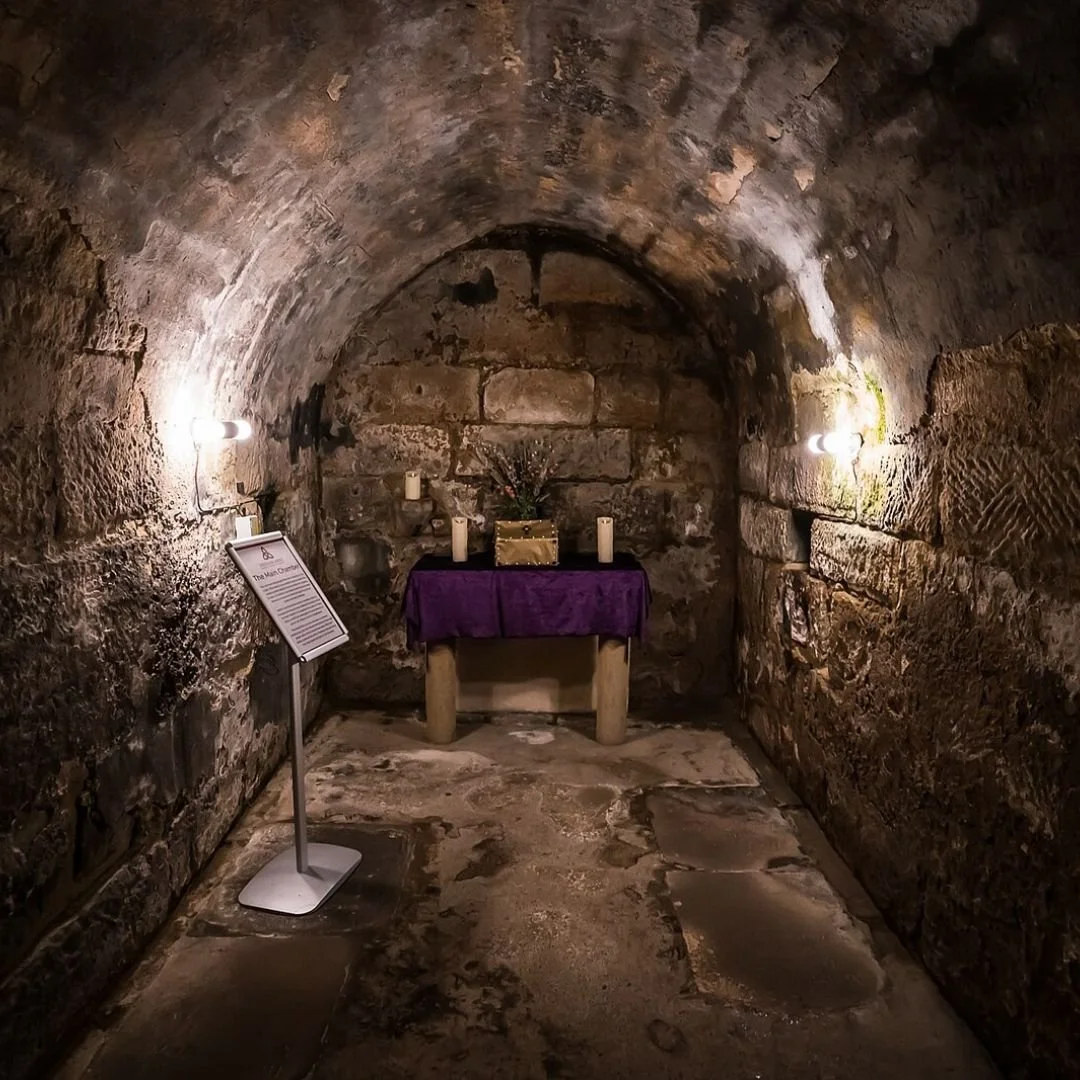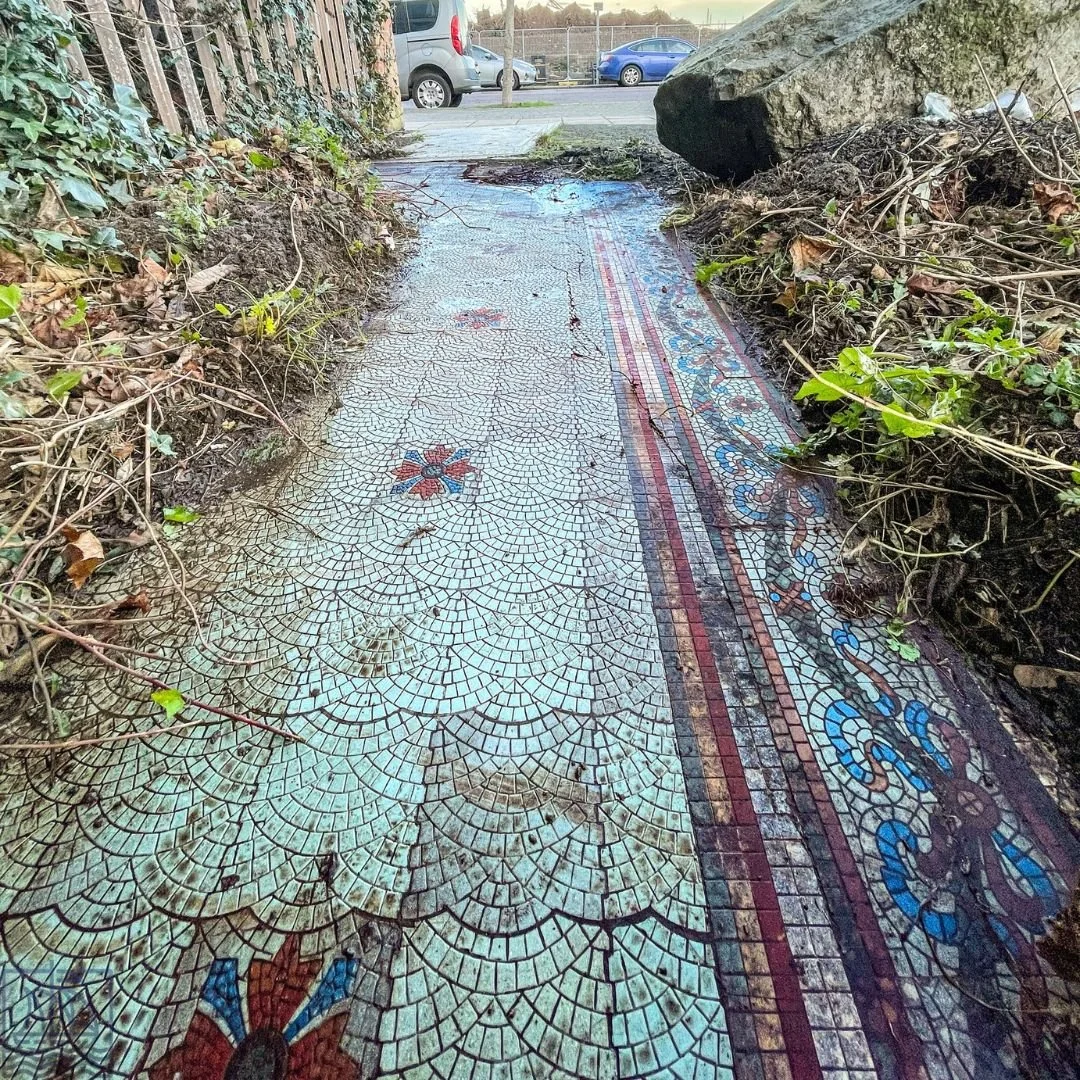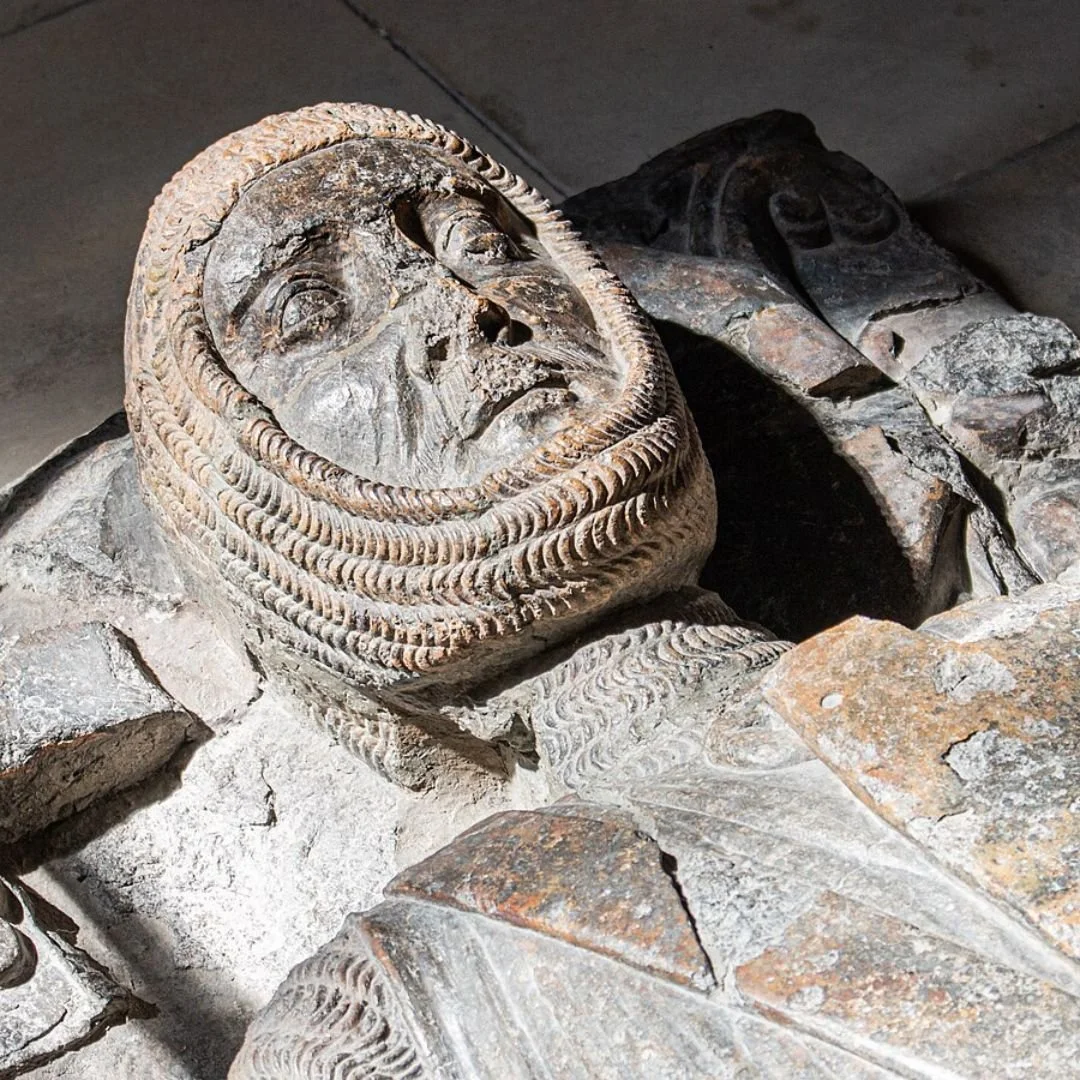Hexham Abbey’s 1,300 Year-Old Saxon Crypt
Ancient steps located directly beneath Hexham Abbey lead to a 1,300 year-old Anglo Saxon crypt - one of the most ancient places of worship in Britain.
Built around 674 AD, the crypt is a surviving part of the original church founded by St. Wilfrid, Bishop of York, during one of the most transformative periods in English history.
This makes it one of the oldest surviving Christian structures in the country, predating even many of Britain’s most famous cathedrals.
Remarkably, while much of the original church above ground has been rebuilt over the centuries, the crypt has remained almost untouched since its construction.
This makes it a rare and invaluable glimpse into the architecture and spirituality of early Anglo-Saxon Christianity.
Over the centuries, Hexham Abbey has been shaped by Viking raids, Norman conquest, and Reformation changes, yet the crypt has survived it all.
The sacred site was built almost entirely from Roman stone, and many walls are carved with beautifully well preserved inscriptions.
Many of the carved stones come from nearby Roman sites, particularly the ruins of Roman Corbridge, a major town just a few miles away.
These stones date back to Roman occupation until the early 5th century.
They include fragments of inscriptions, decorative motifs like scrolls, vines, geometric patterns, and reliefs of human or mythological figures, some bearing Latin texts commemorating officials or religious dedications.
Their presence symbolises a connection between the early Christian community at Hexham and the legacy of the Roman Empire, reflecting respect for the past and continuity through time.
The main use for the crypt was to house sacred relics and offer a space for prayer and pilgrimage.
The narrow corridors allowed priests or pilgrims to walk through and venerate the relics, often in a single-file procession, creating a sense of sacred intimacy.
The tight layout also served a practical purpose, it controlled the flow of people.
Pilgrims would pass through slowly and in an orderly way, enhancing the ritualistic experience and preventing overcrowding in these holy spaces.
The design was inspired by Roman catacombs and crypts that St. Wilfrid saw during his time in Rome.
These narrow passages were meant to make visitors feel they were entering a sacred underground sanctuary, close to the relics of holy martyrs, just like in Rome’s early Christian churches.
Life of Pilgrims and Monks 1,300 years ago
Monks at Hexham Abbey lived disciplined lives centered around prayer, work, and study, following the Rule of St. Benedict.
Their day was structured by regular services called the Divine Office, where they gathered in the church and sometimes the crypt to chant psalms and pray.
Alongside worship, they maintained the abbey, copied manuscripts, and cared for visiting pilgrims, dedicating themselves to both spiritual and practical duties.
Pilgrims traveled to the Abbey too, seeking spiritual blessings, healing, or forgiveness by venerating the relics kept in the crypt.
They often approached the crypt with great reverence, praying, lighting candles, and sometimes performing acts of penance like walking barefoot.
For pilgrims, the abbey was a place of hope and devotion, where their faith connected them to a wider religious community through shared rituals and pilgrimage practices.
The present Abbey itself largely dates from the 12th century when it was rebuilt by the Augustinian canons, transforming it into a priory of great significance.
Following the Dissolution of the Monasteries in the 16th century, Hexham Abbey transitioned into a parish church, ensuring its continued use as a place of worship.
Later restorations in the 19th and 20th centuries preserved much of its medieval character while adapting it for modern congregational needs.
Today, it remains a fine example of Gothic and Romanesque architecture.
Don’t forget to check out our latest blog posts below!
Thank you for visiting Exploring GB.


















